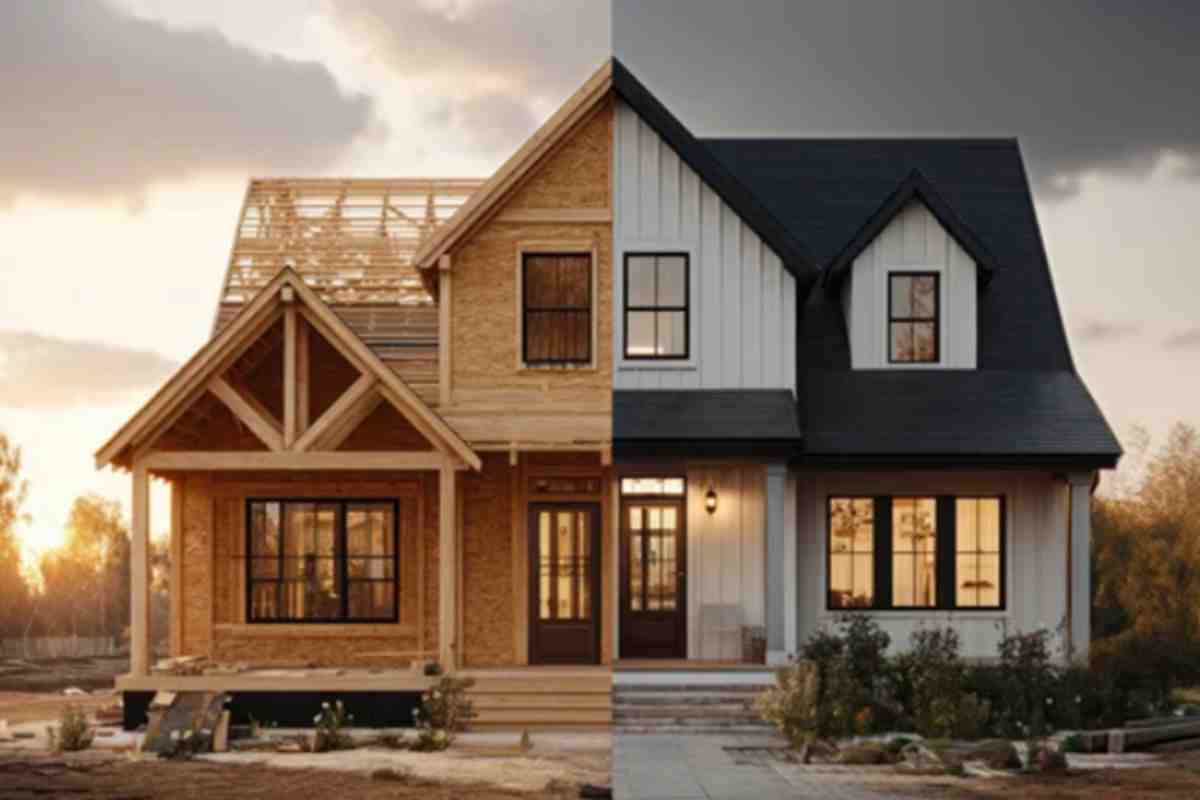
One of the most common questions we hear is: “Which wood should I use for my timber frame home?” And fair enough—after all, the timbers are kind of the main event.
While Douglas fir often gets the spotlight in North American timber framing (for good reason), there’s a whole forest of other wood species that might be just right for your project. Choosing the best fit depends on your design goals, budget, sustainability preferences, and a few other key characteristics like grain, stability, and even how the timber smells. (Yes, really.)
So whether you’re dreaming up your forever home or just nerding out on wood species (welcome, you’re in good company), here’s your guide to the top choices for custom timber frame homes—along with some pro tips on what to look for.
Wood Picks for Timber Frame Construction
White Pine: Lightweight, Low-Drama
Eastern White Pine is a softwood that punches above its weight. It’s easy to work with, doesn’t warp or twist too much, and can span up to 20 feet—making it a strong choice for open-concept layouts.
When you hear “boxed heart,” that means the timber was cut so the heart runs right through the center, giving it extra stability. White Pine is a fan favorite for good reason—it behaves well in the shop, looks beautiful in the frame, and stays put once installed.
Bald Cypress: Strong, Southern, and Stylish
Native to the southeastern U.S., Bald Cypress is a bit of a shape-shifter. You might hear it called southern cypress, tidewater red, yellow cypress, or white cypress depending on where it’s sourced.
It’s moderately heavy and tough, and old-growth cypress is famously resistant to rot. That said, old-growth is getting harder to come by, so most builders now work with second-growth wood, which offers moderate decay resistance. The color ranges from pale yellow to a warm reddish brown, and its fine grain makes for eye-catching exposed beams—if you can get it in long lengths (over 20 feet), even better.
Douglas Fir: The Tried-and-True Classic
Ah, Douglas fir. It’s the backbone of many Hamill Creek Timber Homes for a reason. Found throughout the Pacific Northwest and into Canada, it’s prized for its strength, straight grain, and ability to hold its shape during drying—less cracking and checking means fewer surprises once it’s in place.
Douglas fir varies in color from golden to reddish-brown, and if you see “FOHC” on a beam, that’s “Free of Heart Center”—meaning the bullseye grain has been milled out to reduce movement. Translation: a solid, stable, show-off timber.
Birch: The Under-the-Radar Contender
Birch doesn’t get the same hype as fir or oak, but don’t count it out. It’s durable, easy to work with, and takes finishes beautifully. Yellow birch, the most common type, has a light reddish-brown tone and a subtle luster that adds warmth to a room.
Birch is more often used in furniture, plywood, or cabinetry, but it can hold its own in a structural role—especially if you want a more refined, modern look. Bonus points for its naturally fine texture and pleasant scent. Yes, your house can smell amazing.
A Few Quick Wood-Geek Notes
When you’re choosing timber, here are some characteristics to keep in mind:
- Grade: Higher grade = fewer knots = better strength and visual appeal
- Moisture content: Green wood will shrink. Kiln-dried or air-dried timbers are more stable
- Heartwood vs. Sapwood: Heartwood is older and denser; it lasts longer and resists rot better
- Surface texture: Want rustic? Go rough-sawn. Prefer sleek? Ask for planed timbers
These details may seem small, but they make a big difference in how your frame performs (and looks) over time.
One Last Thought: It’s Not Just the Wood, It’s the Craft
Even the best timber can’t carry the load alone—it’s all about how it’s shaped, joined, and assembled. At Hamill Creek, we combine premium wood with time-tested techniques like mortise-and-tenon joinery to create custom timber frame homes that are as strong as they are beautiful.
And while some people opt for laminated or engineered options (like glulam) for a modern vibe, many of our clients prefer the natural warmth and character of full-length solid timbers. With the right care, your frame can last for centuries—while still looking like a work of art.
Bottom line? Choose the wood that fits your vision, your climate, and your lifestyle—and then let the craftsmanship do the rest.
Ready to pick your beams? We’re happy to help you run through your options, whether you’re aiming for classic lodge, modern barn, or something totally one-of-a-kind.